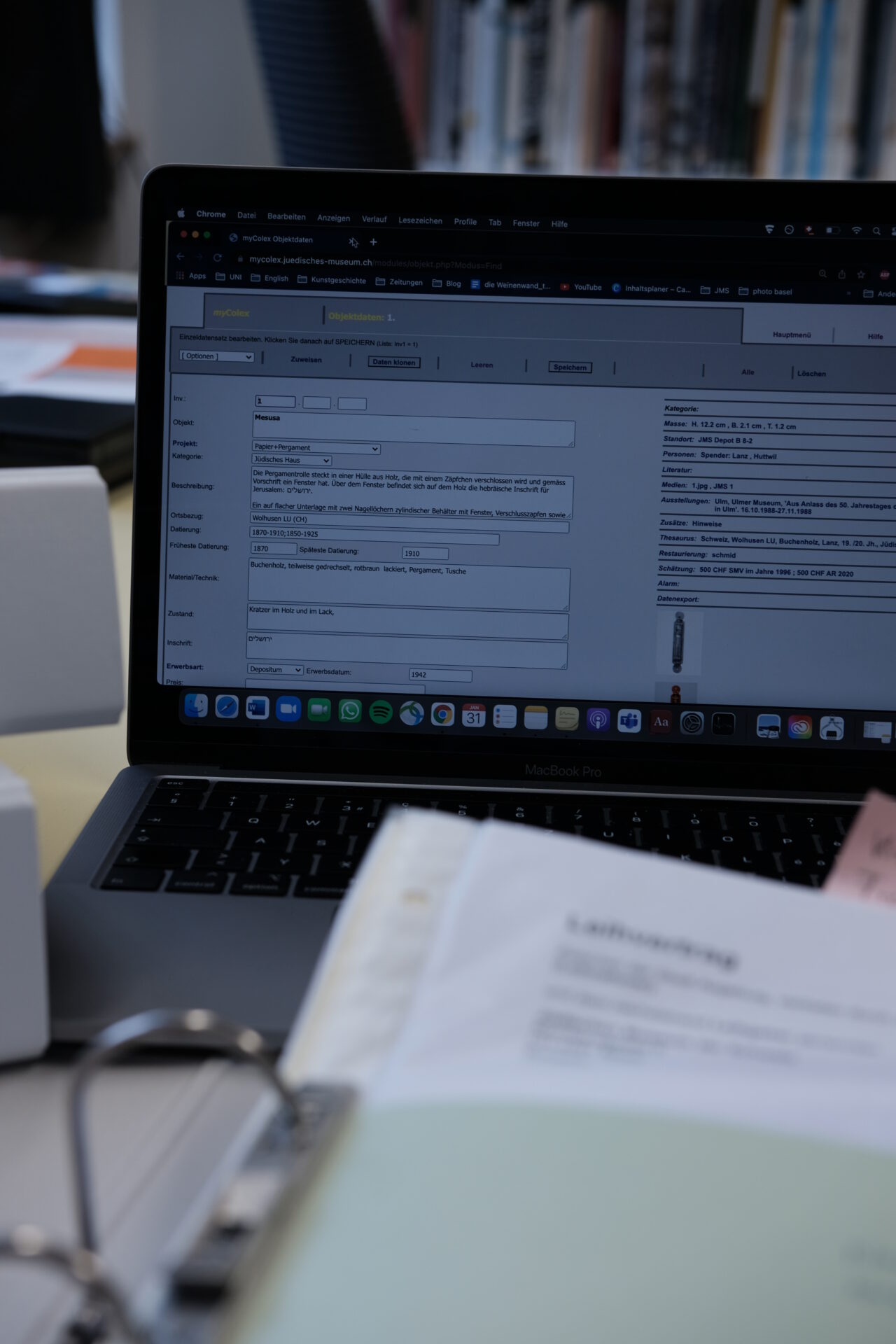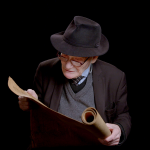JMS goes digital!
Interview with Dinah Ehrenfreund, Kathrin Gisin and Naomi Lubrich
In winter 2022, the Jewish Museum of Switzerland is making its collection accessible online. Hannah Schönhofen spoke with Kathrin Gisin, project coordinator, Dinah Ehrenfreund, curator, and Naomi Lubrich, museum director, about how to make the objects from the past available for the future.
HS: Why did you decide to put the museum’s collection online?
DE: The JMS holds the largest publicly accessible collection of Jewish objects in Switzerland. But we only show a small percentage of our collection in our exhibitions. We store many other objects in our depots. They also deserve to be seen, so we would like to make them accessible to the interested public.
HS: How big is the collection and how is it documented?
KG: The collection currently comprises about 2050 inventory numbers. Since some inventory numbers encompass several individual items, we have about 4000 objects in total. Until the turn of the millennium, our museum kept an analog card index for its inventory. Starting in 2000, the entries on the index cards were transferred to a database. We see a discrepancy in the descriptions of the objects, some with great and others with lesser detail. In the course of the project, we plan to standardize the descriptions and supplement the information where we can. We’re also adding good object photographs for each object.
HS: Will all the objects go online?
NL: No, only a selection. First we have to look at all the entries in our database and translate the texts into English and French. Then we will ask our object donors whether and how they would like to be named. The same goes for lenders. When they give us their go-ahead, we can add their objects to the online collection.
HS: What is the next step in the project?
DE: After we have looked at each entry, we will spend some weeks researching the objects we know least about. In addition to our team, we will invite a historian and a Judaica expert to look at the objects with us. We hope to find out more about them, including their collection history.
HS: In what way is the digitization project connected to the museum’s move?
NL: For planning the exhibition and building our new storage space, it is very helpful to have, for instance, the exact measurements of the objects, meaning their height, width and depth. The measurements allow us to build display cases and storage space in the right sizes. Their material is also important. Knowing exactly how many are made of metal, textile, or paper, allows us to store them better. Some objects need to be protected from light, others are sensitive to temperature.
HS: Thank you very much!
verfasst am 09.05.2022
© Photo: Elwira Spychalska



